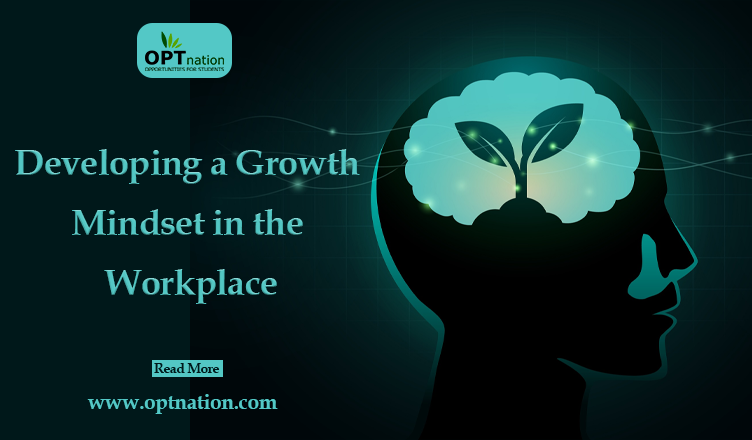In today’s rapidly changing and competitive work environment, developing a growth mindset is essential for success and personal growth. Having a growth mindset means understanding that with hard work and perseverance, you can develop your abilities and intelligence. It’s all about keeping an open mind and being dedicated to continuous learning. So don’t be afraid to push yourself and embrace challenges – you have the power to grow and evolve! This article will explore the concept of developing a growth mindset in the workplace, provide practical strategies for cultivating this mindset, and highlight the role of emotional intelligence training in fostering a growth-oriented mindset. By understanding the importance of a growth thinking and the impact of emotional intelligence training, individuals can unlock their full potential, overcome challenges, and thrive in their professional journeys.
The Power of Mindset:
Understanding the power of mindset is the first step in embracing a growth-oriented perspective. This section will delve into the differences between a fixed mindset and a growth mindset, explaining how a certain mindset fosters resilience, learning, and innovation, while a fixed mindset limits personal and professional development.
Embracing a Positive Learning Attitude:
Developing a growth mindset requires adopting a positive learning attitude. This section will provide insights into cultivating a mindset that embraces challenges, views failure as an opportunity for growth, and seeks continuous learning and improvement. Discovering new things, being receptive to new ideas, and daring to explore beyond familiar territory can greatly impact one’s growth. This is why having a curious and open-minded attitude and a willingness to step outside of one’s comfort zone are essential qualities to possess.
Setting Goals for Growth and Development:
Goal-setting is an integral part of developing a growth mindset. This section will explore strategies for setting SMART (Specific, Measurable, Achievable, Relevant, Time-Bound) goals that align with personal and professional aspirations. It will emphasize the significance of setting both short-term and long-term goals to foster growth and track progress.
Embracing Feedback and Constructive Criticism:
Feedback and constructive criticism provide valuable insights for growth and improvement. This section will discuss the importance of receiving feedback with an open mind and using it as an opportunity for growth. It will explore techniques for accepting feedback gracefully, seeking clarification, and incorporating feedback into personal and professional development.
Cultivating Resilience in the Face of Challenges:
Resilience is a crucial component of a growth mindset. This section will explore strategies for cultivating resilience, such as reframing setbacks as learning opportunities, developing problem-solving skills, and building a support network. It will highlight the importance of perseverance and bouncing back from failures and setbacks.
Continuous Learning and Skill Development:
Developing a growth mindset involves a commitment to continuous learning and skill development. This section will discuss the significance of embracing a learning mindset, seeking new knowledge, and acquiring new skills. It will explore avenues for professional development, such as attending workshops, pursuing certifications, and engaging in self-directed learning.
Fostering a Growth Mindset in the Workplace:
Creating a supportive work environment that nurtures a growth mindset is crucial. This section will provide insights for leaders and organizations on fostering a growth-oriented culture. It will discuss strategies for promoting learning opportunities, providing feedback and recognition, and encouraging collaboration and innovation.
Conclusion:
In conclusion, developing a growth mindset is a transformative journey that empowers individuals to unlock their full potential and thrive in the workplace. By understanding the power of mindset, individuals can shift their perspective from a fixed mindset to a growth-oriented mindset that embraces continuous learning and development.
Embracing a positive learning attitude is a crucial aspect of developing a growth mindset. It involves being open to new experiences, seeking feedback, and embracing challenges as opportunities for growth. By approaching tasks and obstacles with a curiosity and willingness to learn, individuals can expand their skills, knowledge, and capabilities.
Setting goals for growth is another essential component of a positive thinking. By setting specific, measurable, attainable, relevant, and time-bound (SMART) goals, individuals can focus their efforts and track their progress. Goal-setting provides direction and motivation, driving individuals to push beyond their comfort zones and achieve personal and professional growth.
Cultivating resilience is vital for maintaining a positive thinking in the face of challenges and setbacks. Resilience enables individuals to bounce back from failures, adapt to change, and persevere in the pursuit of their goals. By developing resilience, individuals can view setbacks as learning opportunities, embrace change as a catalyst for growth, and maintain a positive outlook even in challenging circumstances.
Emotional intelligence training plays a crucial role in developing a positive thinking. It enhances self-awareness, empathy, and adaptability, enabling individuals to effectively navigate relationships, manage emotions, and communicate with others. By integrating emotional intelligence training into personal and professional development, individuals can strengthen their growth mindset and enhance their overall effectiveness in the workplace.

